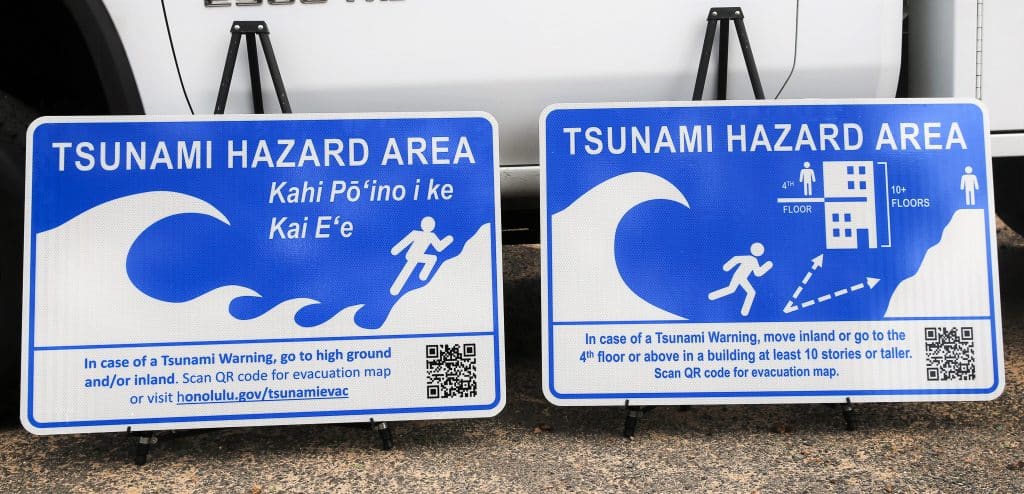Awareness, Education and Action is the Focus of Tsunami Awareness Month
Posted on Mar 31, 2024 in Main
Above: Examples of two signs that O‘ahu residents might see around areas which may be impacted by tsunamis. Our neighbor island county partners might have different signage.
Photo courtesy: HI-EMA
As people in Hawai‘i awoke and got ready for work and school on April 1, 1946, an unwelcome visitor barreled its way toward the islands, triggered by a massive overnight earthquake off Alaska’s Aleutian Islands.
Hilo would take the brunt of the “April Fools’ Tsunami,” with 158 deaths and damage in the millions. The tsunami also destroyed the Scotch Cap lighthouse on Unimak Island, Alaska, near the epicenter, killing its five occupants.
Hawai‘i learned some deadly lessons about tsunamis and tsunami awareness that day. Because of this, the Hawai‘i Emergency Management Agency (HI-EMA), and its federal, state, and county partners observe every April as Tsunami Awareness Month, sharing those lessons to save lives in the future.
This year’s focus is on Awareness, Education, and Action — knowing what a tsunami is, how to recognize the signs of an impending tsunami, and what to do before, during, and after a tsunami occurs.
Tsunamis can strike at any time; there is no “tsunami season.” They are often generated by earthquakes but can be triggered by underwater volcanic eruptions and landslides, or other powerful events as well. And a tsunami isn’t only one wave — it’s a series of waves.
A roaring sound from the sea, strong earth shaking, or a suddenly exposed sea floor are all signs a tsunami may be arriving, even if warning sirens aren’t sounding. Don’t wait — get to higher ground immediately!
After a tsunami, wait for an all-clear from authorities before going home. Avoid debris, downed power lines and other hazards.
“Get tsunami ready now,” said HI-EMA Administrator James Barros. “Know your evacuation routes and make a plan.”
How can you prepare? Pack a Go Bag of essential items such as food, water, clothes, medication and important documents, in case you need to evacuate. Make a plan, including phone numbers and a meeting place if you get separated, and practice your plan with friends and family.
Visit ready.hawaii.gov for more information. Go to the “Get Ready” menu and select “Types of Disasters” to learn more. No get scared — get prepared!